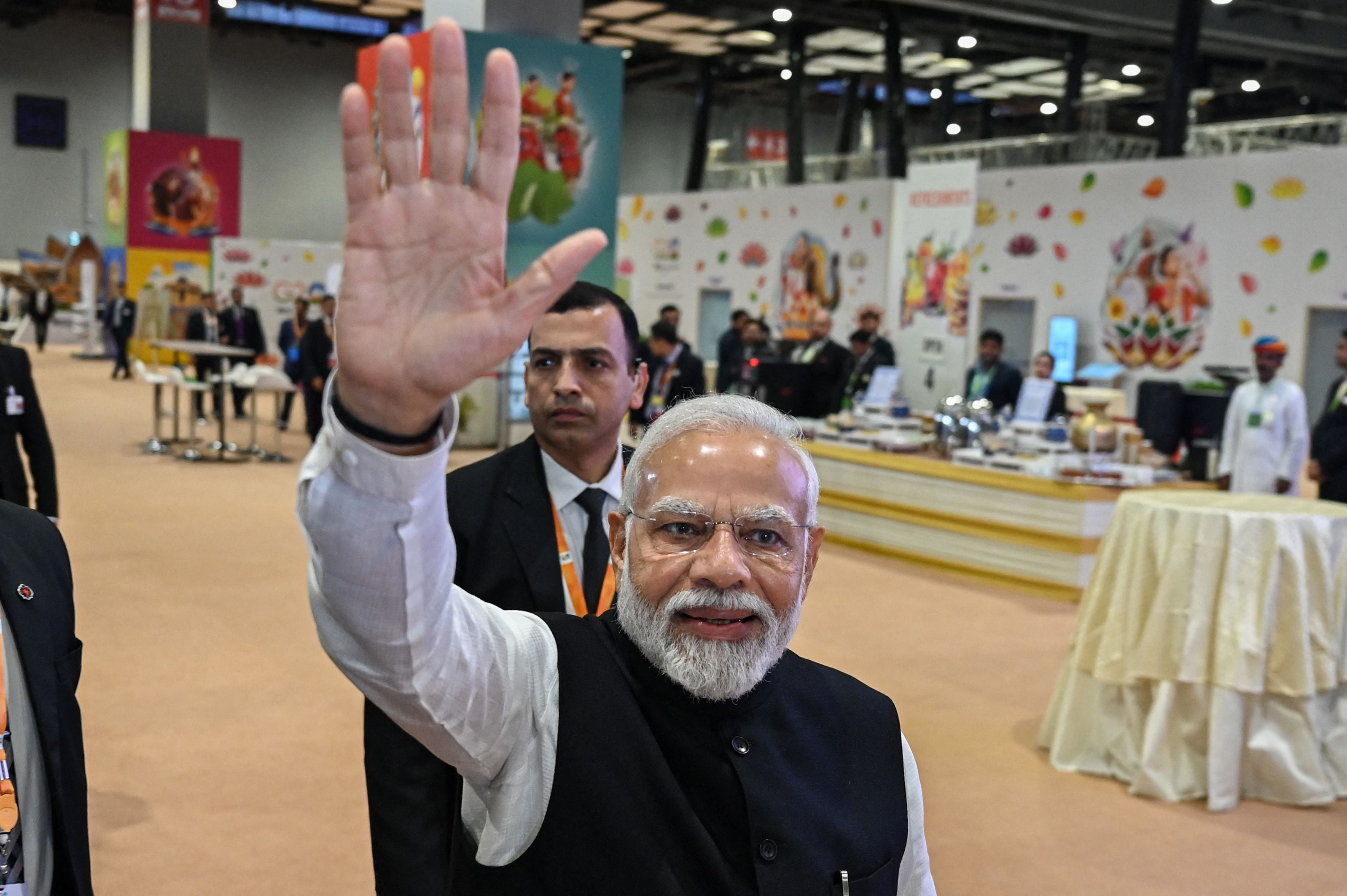Modi came to speak to media after his G20 summit. It was a victory lap
Analysis: If ever there were a time for the Indian prime minister to finally give his first press conference, this was it, explains Shweta Sharma in Delhi


Your support helps us to tell the story
From reproductive rights to climate change to Big Tech, The Independent is on the ground when the story is developing. Whether it's investigating the financials of Elon Musk's pro-Trump PAC or producing our latest documentary, 'The A Word', which shines a light on the American women fighting for reproductive rights, we know how important it is to parse out the facts from the messaging.
At such a critical moment in US history, we need reporters on the ground. Your donation allows us to keep sending journalists to speak to both sides of the story.
The Independent is trusted by Americans across the entire political spectrum. And unlike many other quality news outlets, we choose not to lock Americans out of our reporting and analysis with paywalls. We believe quality journalism should be available to everyone, paid for by those who can afford it.
Your support makes all the difference.When word spread that Indian prime minister Narendra Modi was to address the 3,000 journalists at the G20 media centre late on Sunday, a ripple of excitement spread through the venue. TV broadcasters here started dedicating live coverage to showing an empty walkway where Mr Modi might emerge at “any moment”.
Some journalists started to grow impatient, complaining of a “hostage-like situation” as the wait stretched into the third hour, before finally the summit’s host emerged for what some had optimistically billed as an interaction with the media.
Modi appeared through a doorway and walked the length of the hall, waving his hands and thanking them for coming.
Journalists shouted questions as simple as “Was the G20 successful sir?” but the prime minister just waved silently and left, as some members of the crowd – it’s unclear what media organisations they represented – began patriotic chants of “Bharat mata ki jai” (Long live Mother India).
In the end this was not an interaction with the press but rather a victory lap for a prime minister who had just succeeded in bringing the leaders of the world’s largest economies to a consensus, at the most geopolitically divisive time in the G20’s recent history.
Despite some criticisms of watered-down language on Ukraine, this slickly-organised G20 has been a major coup for India on the world stage, as well as a huge boost to Mr Modi’s personal reputation with elections due in India in the first half of next year.
The prime minister was at the centre of everything during the weekend’s events, and it has been impossible to move through Delhi in the build-up to the summit without seeing his beaming face on posters at every turn.
If ever there were a time for Mr Modi to give the first press conference of his nine years in power – apart from two questions at the White House during a state visit, he never has – this was it.
Their differing approaches to the press has emerged as a point of contention between Mr Modi and Joe Biden in the aftermath of the talks. Mr Biden waited until he was on the next stop of his Asian tour to give a solo press conference, telling reporters in Hanoi, Vietnam that he had raised with Mr Modi the issue of “respecting human rights and the vital role of civil society and a free press”.
Mr Biden’s team say they pushed hard for more media access to their bilateral discussions here in Delhi, but this was blocked by the Indian side.
One journalist asked Jake Sullivan, Mr Biden’s national security adviser: “Can you detail what, from the US side, you guys are doing to press for press access and why Biden would meet with Modi if there are no reporters allowed to participate in a pool spray or something like that?”
Mr Sullivan said while he takes such matters “extremely seriously”, the meeting “is [an] unusual” setting for them too and Mr Modi “has set out the protocols he’s set out”.
A Reuters report said the White House “press corps was sequestered in a van, out of eyesight of the two leaders”.
Humera Pamuk, the Reuters foreign policy reporter covering the US State Department, said on X it was “something quite unprecedented”.
India’s press freedom ranking has consistently fallen since Mr Modi came to power, dropping 11 places to 161st out of 180 countries in this year’s index published by Reporters Without Borders. India says it disagrees with the methodology of the index.
But it has largely not affected the leader’s domestic popularity, with one recent Pew survey indicating that he is viewed favourably as a leader by 80 per cent of Indians. And while opposition parties in India have formed a formidable new coalition – dubbed “INDIA” – to take on Mr Modi’s BJP at the next national election, he remains the favourite to secure a third term.
Join our commenting forum
Join thought-provoking conversations, follow other Independent readers and see their replies
Comments